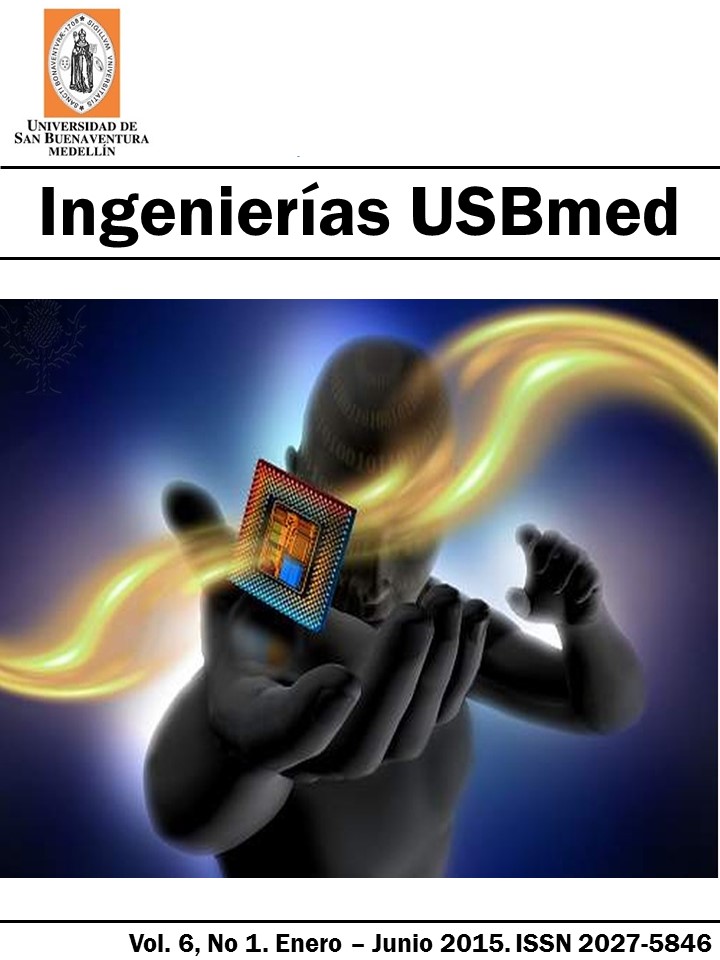View/Download
How to Cite
Díaz Montejo, J. E., Bellon Cely, D. F., & González Sanabria, J. S. (2015). A comparative study between temporary databases and relational databases applied to Electronic Health Records. Ingenierías USBmed, 6(1), 46–53. https://doi.org/10.21500/20275846.1723
More Citation Formats
License terms
▼
This journal provides immediately free access to its contents under the principle that make available the research results for free to the public, helps for a greater global exchange of knowledge.
Therefore, the journal invokes the Creative Commons 4.0
License attributions: Recognition – Non-commertial - Share equal. Commercial use and distribution of original or derivative works are not permitted and must be done with a equal license as the one that regulate the original work.
Abstract
Choosing a database model when a system is developed is a decision that establishes the course of a project, and understanding the advantages and disadvantages of these models provides the starting point. This article reflects on the comparison between relational and temporary databases by evaluating their performance in a case study: the management of electronic medical records. The process starts by selecting desirable features and sub-features of the DBMS and the subsequent design of the case study and the choice of representative managers of each model. All of this having as purpose to provide a framework for future projects within the field of telemedicine, electronic medical records and mostly health systems involving temporary data storage.
References
[1] C. J. Date. “Introducción a los sistemas de bases de datos”, séptima edición. Editorial Prentice-Hall, 2001.
[2] D. Costal-Cost, “El modelo relacional y el álgebra relacional”. Editorial UOC, 2009.
[3] E. Nina, P. N. Hubler, M. M. Moro, G. Demartini, "A temporal database management system implemented on top of a conventional database," Computer Science Society, 2000. SCCC '00. Proceedings. XX International Conference of the Chilean , vol., no., pp.58,67, 2000.
[4] K. Kulkarni, J. Michels. "Temporal features in SQL: 2011". ACM SIGMOD Record, 2012.
[5] M. Al-Kateb, et al. "Temporal Query Processing in Teradata", Genoa, Italy. 2013.
[6] R. Smith, “What clinical information do doctors need?”, BMJ, vol. 313, pp.1062-1068, 1996.
[7] D. Kalra, “Electronic Health Record Standards”, IMIA Yearbook of Medical Informatics 2006.
[8] J. D. Castro, Tesis de Grado “Modelos de calidad orientados a los sistemas gestores de bases de datos”. Universidad Pedagógica y Tecnológica de Colombia. 2009.
[9] HL7 en español, Documentos clínicos electrónicos HL7 CDA R2 - Estructura general. Disponible en: http://hl7es.blogspot.com/2011/04/documentos-clinicos-electronicos-hl7.html.
[10] E. de la Cruz, D. M. López, “Guía de implementación HL7 del estándar CDA para el almacenamiento de historias clínicas de acuerdo con los requerimientos de la Fundación HL7 Colombia”, Cali, Colombia. 2011.
[11] K. Shashi, “A generalized model for a relational temporal database”. Proceeding SIGMOD '88 Proceedings of the 1988 ACM SIGMOD international conference on Management of data.
[2] D. Costal-Cost, “El modelo relacional y el álgebra relacional”. Editorial UOC, 2009.
[3] E. Nina, P. N. Hubler, M. M. Moro, G. Demartini, "A temporal database management system implemented on top of a conventional database," Computer Science Society, 2000. SCCC '00. Proceedings. XX International Conference of the Chilean , vol., no., pp.58,67, 2000.
[4] K. Kulkarni, J. Michels. "Temporal features in SQL: 2011". ACM SIGMOD Record, 2012.
[5] M. Al-Kateb, et al. "Temporal Query Processing in Teradata", Genoa, Italy. 2013.
[6] R. Smith, “What clinical information do doctors need?”, BMJ, vol. 313, pp.1062-1068, 1996.
[7] D. Kalra, “Electronic Health Record Standards”, IMIA Yearbook of Medical Informatics 2006.
[8] J. D. Castro, Tesis de Grado “Modelos de calidad orientados a los sistemas gestores de bases de datos”. Universidad Pedagógica y Tecnológica de Colombia. 2009.
[9] HL7 en español, Documentos clínicos electrónicos HL7 CDA R2 - Estructura general. Disponible en: http://hl7es.blogspot.com/2011/04/documentos-clinicos-electronicos-hl7.html.
[10] E. de la Cruz, D. M. López, “Guía de implementación HL7 del estándar CDA para el almacenamiento de historias clínicas de acuerdo con los requerimientos de la Fundación HL7 Colombia”, Cali, Colombia. 2011.
[11] K. Shashi, “A generalized model for a relational temporal database”. Proceeding SIGMOD '88 Proceedings of the 1988 ACM SIGMOD international conference on Management of data.
Downloads
Download data is not yet available.














